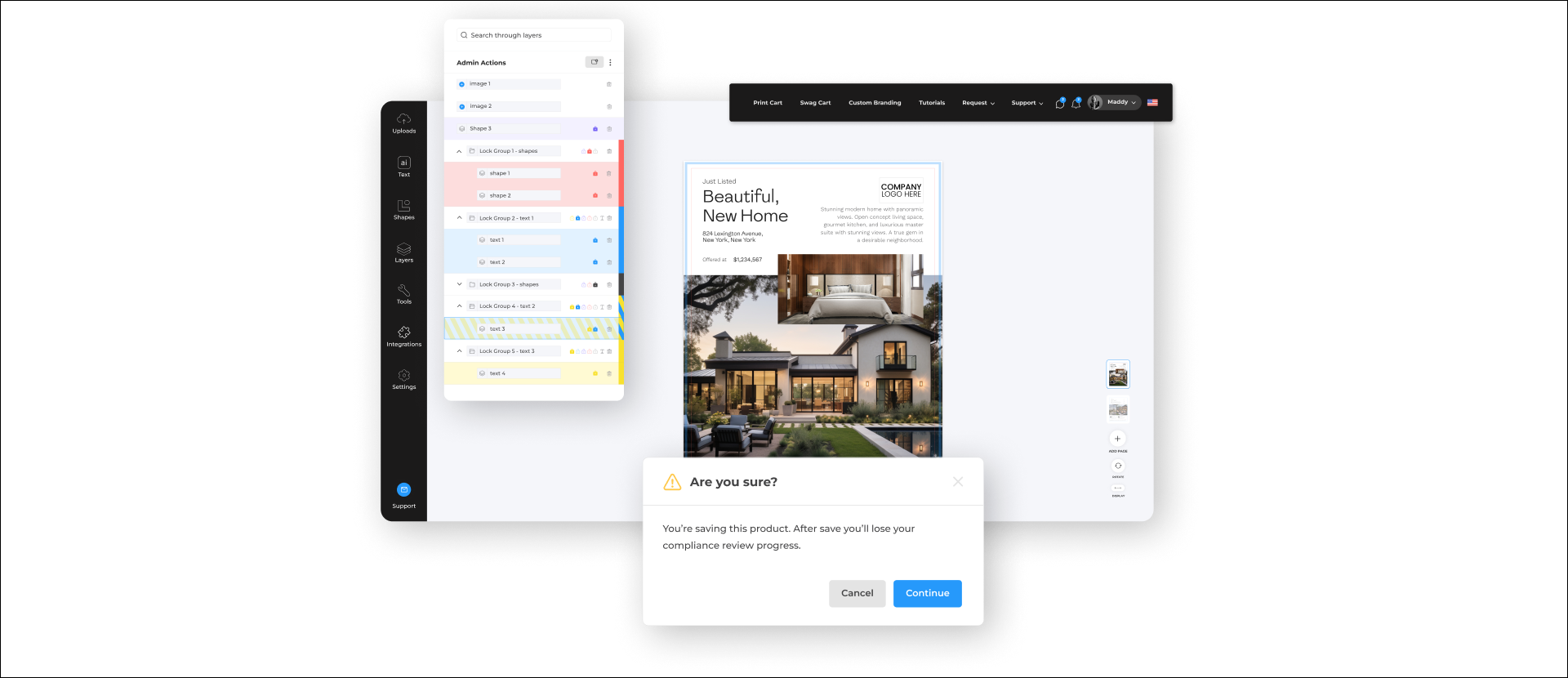The reasons why real estate template adoption often struggles are not because agents’ rebellious nature gets the best of them. It’s practicality. If accessing a flyer takes too many clicks or the layout feels too rigid, they’ll default to creating their own. Sadly, the usual result of this action is the use of off-brand materials and frustrated real estate marketing teams. To fix it, we need to look beyond the templates themselves and rethink how agents experience them on a day-to-day basis.
The Real Reasons Agents Ignore Your Templates
If you’ve struggled with real estate template adoption, you are not alone. It’s rarely about the quality of the design or the marketing team's processes. It’s about how the templates fit into the agent’s day. Access, timing, and functionality are all contributing factors. Let’s take a closer look at what’s going on behind it all.
They Don’t Know Where to Find Them

Templates often reside deep inside folders on Dropbox, Google Drive, or SharePoint, and if agents don’t have a link ready at all times or need more than a couple of clicks to access them, they won’t bother. The usage rate of templates is directly proportional to convenience; therefore, when marketing tools are hidden or difficult to access, adoption drops rapidly.
They’re Too Hard to Customize

A static flyer in PDF or an InDesign file is difficult to edit. If agents need help from the marketing or design team to customize, they are out of it. Picture an agent trying to swap out a listing photo before an open house. If it takes ten minutes and three logins, they’ll move on.
They Don’t Feel Personalized
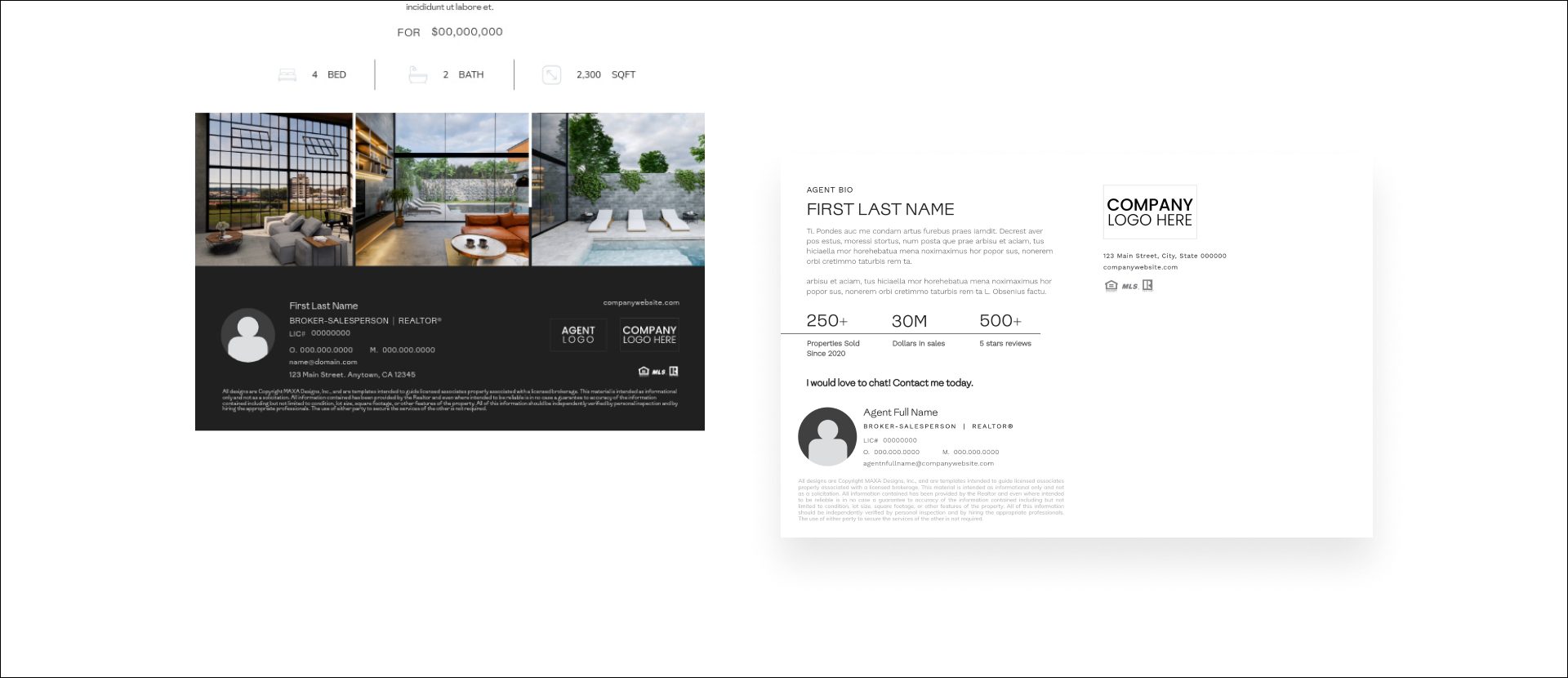
The key is to make the real estate marketing materials feel like the agents themselves created them. We are talking about headshot pictures, contact information, and license numbers, which should already be in place. When templates require manual updates every time, they start to feel generic and disconnected.
They Don’t See the Value

If the materials don’t reflect local market realities, real estate niches a particular agent is interested in, or align with an agent’s goals, they’ll default to creating their own. Say an agent is given a set of email templates filled with generic neighborhood stats and dated graphics. They won’t reflect his listings or clientele, so he’ll skip them altogether. Agents want materials that feel relevant to their target market, tone, and brand.
They Take Too Much Time

Ask any agent what they wish they had more of, and the answer is simple: time. Between showings, client calls, and negotiations, marketing has to fit in the margins. If a template demands multiple steps or design tweaks, it’s already a nonstarter. Just remember the customization issue. It’s a recipe for wasting time.
What Top Real Estate Brands Do Differently
It’s not a trick that propels the top real estate agents and brokerages to the top. It’s a systematic change and adaptation. Let’s see how they pull it off.
They Centralize Access

The first step toward better real estate template adoption is simplifying access. The most successful teams centralize their materials so agents always know where to go. Platforms like MAXA make this easy by allowing brokerages to organize templates into clear categories and assign access based on user groups. Marketing can roll out new materials gradually, limit access to specific divisions, or open everything up once agents are trained.
They Automate Personalization
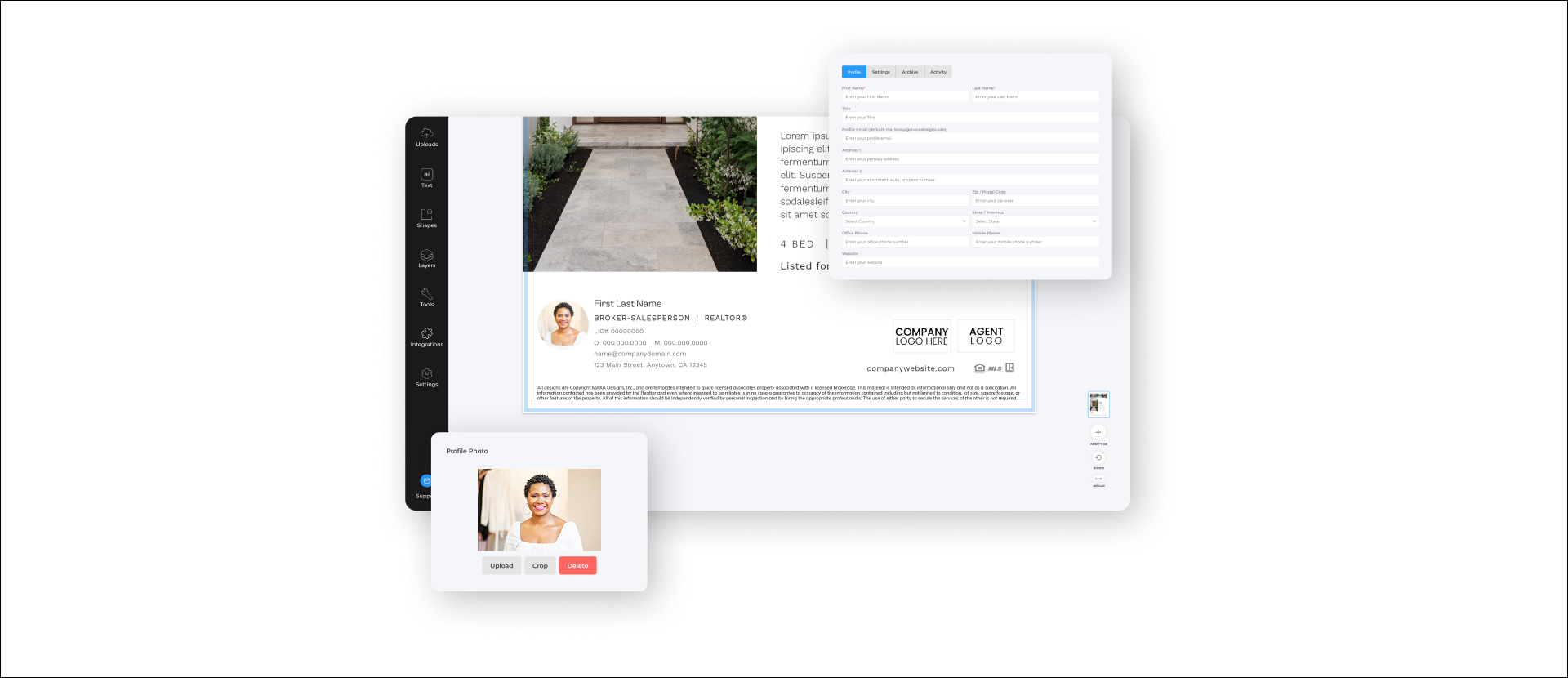
True real estate template adoption happens when personalization feels effortless. Agents shouldn’t have to retype their name, upload a headshot, or copy MLS data every time they create a flyer. With a system like MAXA, those details are built in.
Agent profiles automatically populate contact information, license numbers, disclaimers, and even co-branding content where needed. The result is a seamless experience: an agent opens a template and it’s already theirs, accurate and compliant.
They Build Smart Templates
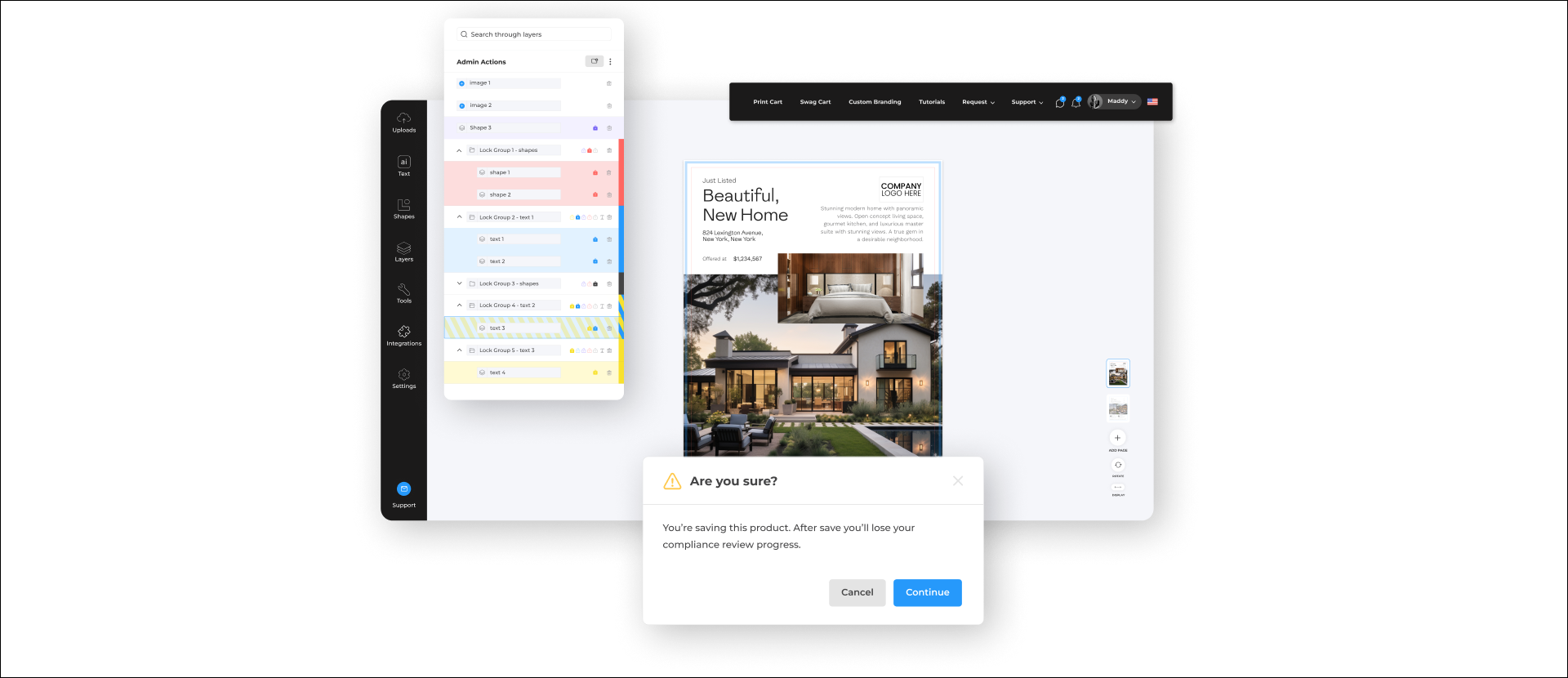
Smart templates are those that protect the brand while also allowing agents to enjoy a certain level of flexibility. On platforms like MAXA, brokerages can create a master template that defines what stays fixed and what can be edited.
When an agent opens the design in Layers, certain elements display a red lock icon, such as the brokerage logo or disclaimer, indicating they cannot be changed. Other areas, like property photos or text fields, are open for quick updates through Upload Zones.
This setup enables agents to personalize their materials in minutes while staying true to the brand. Once complete, they can send the piece for compliance approval directly within the platform.
They Invest in Onboarding and Promotion

Even the best platform will fail to gain traction if agents do not know how to use it. Successful brokerages approach template adoption as an internal launch, complete with training, communication, and consistent follow-up. Short video walkthroughs, onboarding guides, and quick reference sheets help agents understand how the system works and how it integrates into their daily workflow.
They Create Templates Agents Actually Need

What brokerages that sit at the top of the real estate food chain focus on high-demand formats, such as social media posts, listing kits, postcards, and open-house flyers. These materials support real, immediate needs rather than generic use cases. Agents need to open the platform and find templates that fit their current listings or marketing goals right away in order to engage.
How to Drive Real Estate Template Adoption (Step-by-Step)
.png)
Here’s the step-by-step guide on how to push for better template adoption from agents.
- Audit what you already have: Start by reviewing your current library to see which templates agents actually use. Identify what is being ignored and why, so you can refine or remove what no longer serves them.
- Integrate market stats data: By endowing your templates with features such as Market Stats Data integration, you give agents a tool to pull up data such as the number of homes sold, median prices, the total of active listings, and more, so that they can take the informative marketing materials to a whole new level.
- Talk to your agents: Ask for feedback directly through surveys or short interviews. The more you understand what the agents need and where they struggle, the better you’ll design template will become.
- Centralize access: House all marketing materials in one intuitive, purpose-built platform. When everything lives in a single, easy-to-navigate space, you won’t have to worry about template adoption rates.
- Automate personalization: Enable customization features such as auto-populating agent headshots, contact details, office information, and required disclaimers. The less the agents have to do, the better.
- Design with intention: Focus on the formats agents actually use most, such as listing kits, postcards, and social posts. When it’s time to expand or tweak the formats, resort to step number 2. Communication is vital.
- Create usage triggers: Automate reminders to bring agents back to the system whenever a significant event occurs. For example, when a new listing goes live, prompt them to open the pre-built listing kit.
- Promote adoption internally: If you leverage internal communication when promoting template adoption, such as by highlighting success stories in meetings or celebrating agents who use the system effectively, you can boost template adoption rates organically.
What to Avoid When Designing Templates
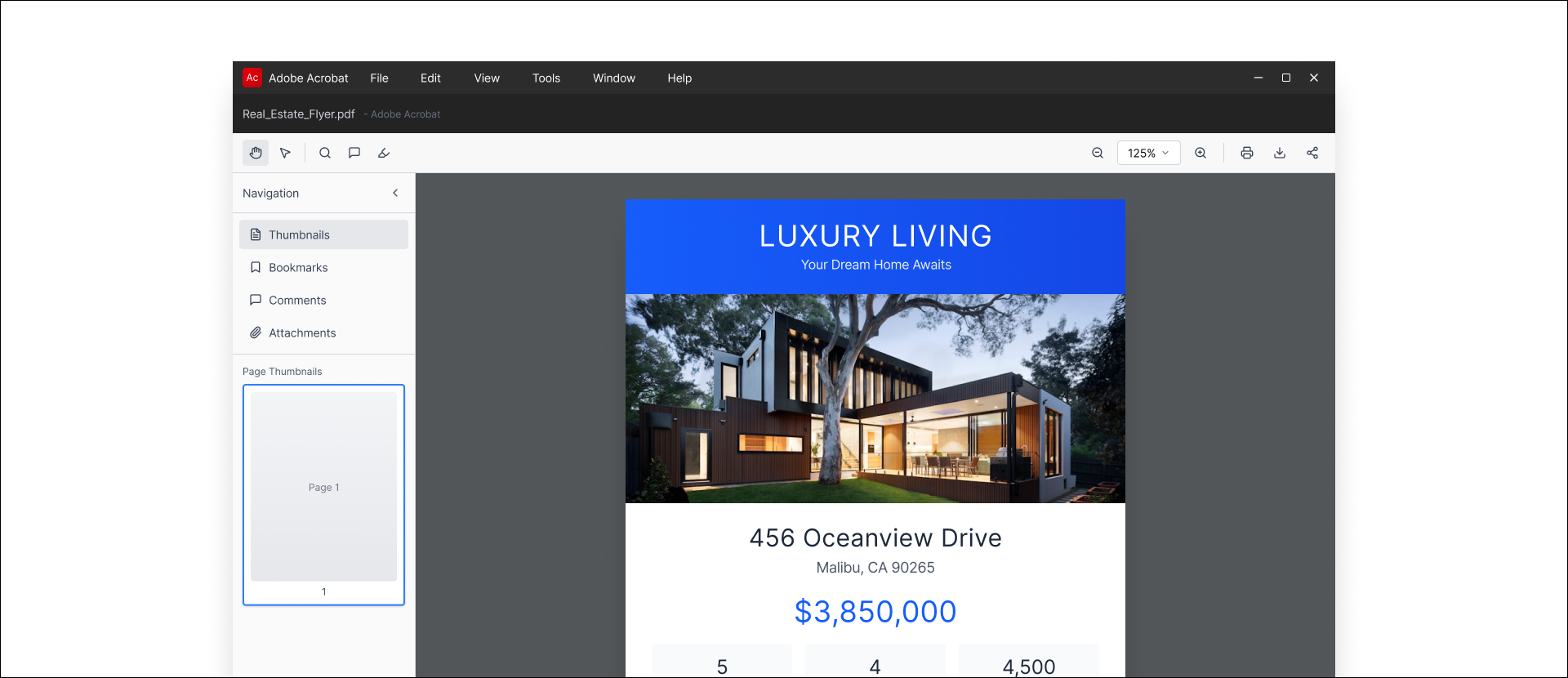
Here are the pitfalls that you need to avoid when designing real estate templates, especially if you want them to be put to use:
- Overly complex or design-heavy formats: Templates that require extensive editing or design skills discourage use. Keep layouts clean, flexible, and practical for quick updates.
- Lack of clear brand rules and visual consistency: Create clear rules about branding and lock core elements like logos, colors, and fonts to maintain a unified look.
- Ignoring legal compliance: Every template should account for license numbers, brokerage details, and MLS rules. The opposite can only result in compliance risk and rework.
- One-size-fits-all approach: A beginner's folly. A template that works for an urban condo agent may not be suitable for someone selling a rural homestead in Oregon. Tailor formats to different markets, audiences, and agent styles. Always.
Conclusion
To make real estate template adoption work, you must combine design, automation, and compliance. That’s precisely what MAXA delivers. Their design team creates brand-specific templates for print, social, video, and email, all housed within a white-label platform. Agents can easily customize text, colors, and layouts, while contact details, license numbers, and disclaimers populate automatically. From business cards to HTML5 emails, everything stays on brand, compliant, and ready to share. It’s design, marketing, and scalability simplified and done right.



